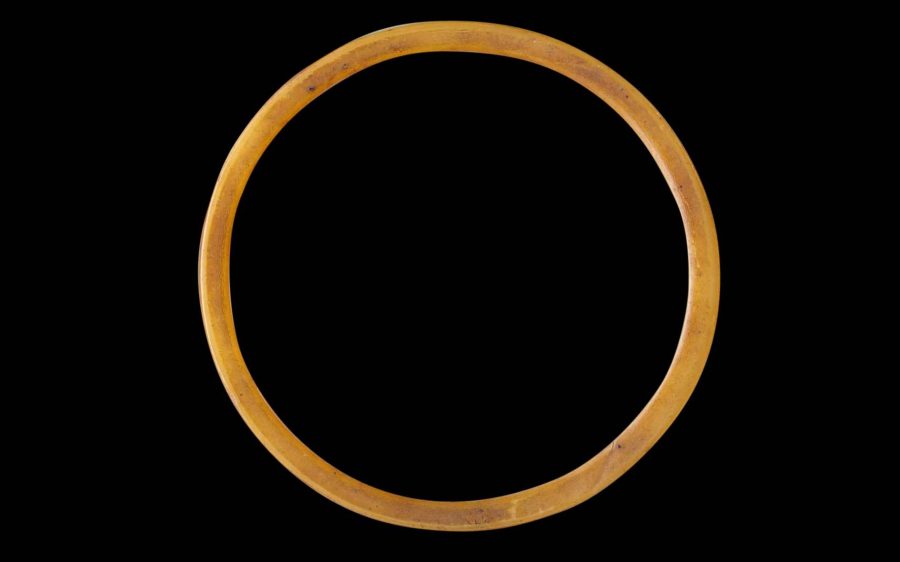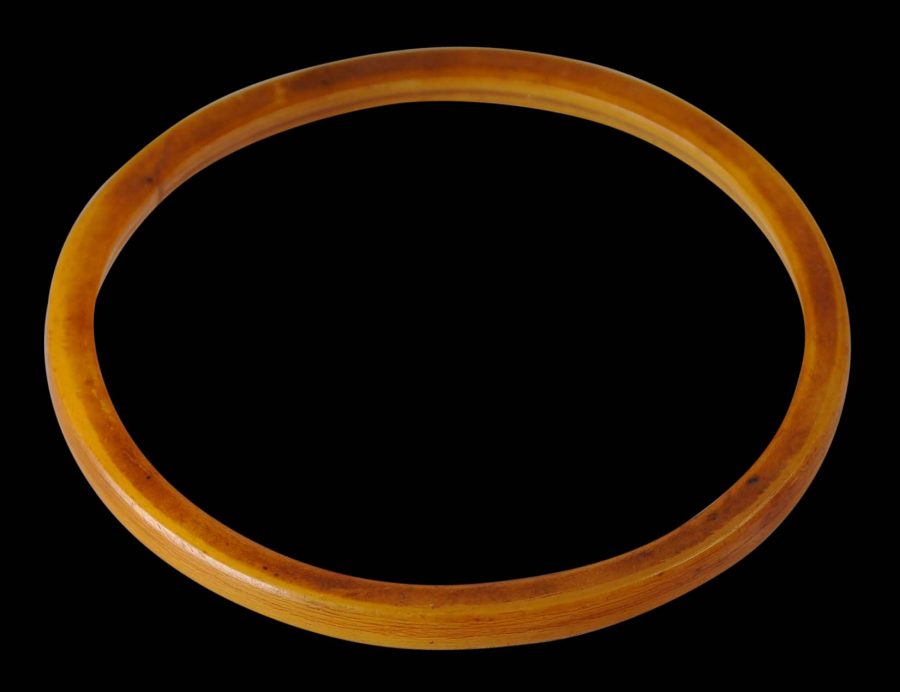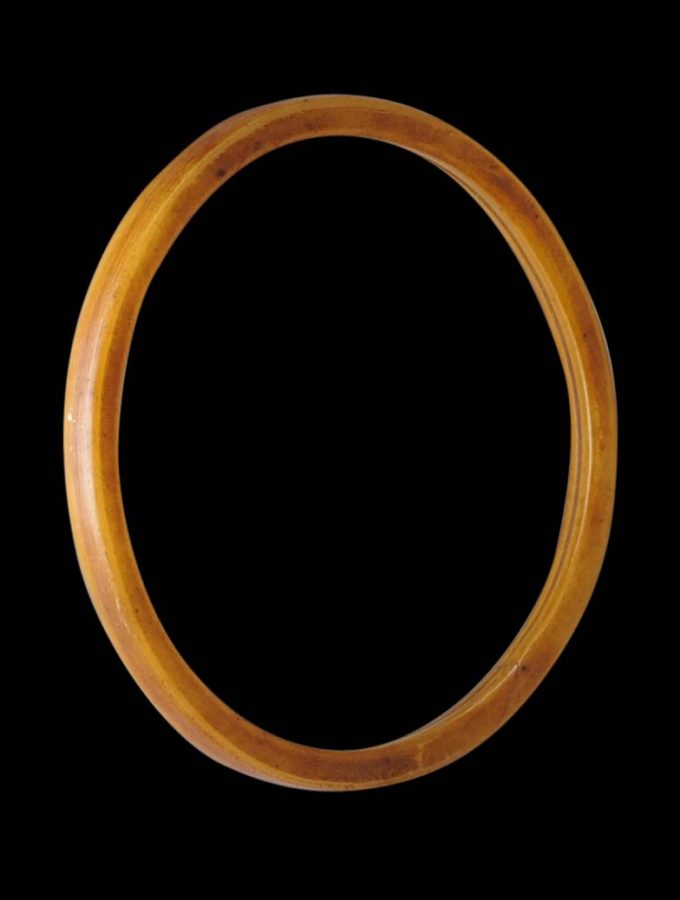This fine bracelet from the Dayak people of Borneo has been made of light-weight hornbill casque. It is perfectly round and flat. It has been made from one single, long strip. It is likely that the strip was first boiled to soften it, and the ends were then joined to make the loop.
The hornbill (Rhinoplax vigil) is a large forest bird known for its enormous orange-red beak and casque and dark blue feathers. It was regarded with enormous symbolic importance among the Dayak of Borneo’s interior and played an important role in their creation myths. Many of Borneo’s indigenous groups traditionally viewed the hornbill as a representation of the upper-world god. The wearing of hornbill feathers and carved casques during ceremonies conveyed the high status, power and prestige of the wearer. The wearing of ornaments fashioned from hornbill tended to be restricted to men.
The casques are made of solid kerotin and are strong but also readily carved and pierced. According to Brinkgreve & Stuart-Fox (2013, p. 232) among the Kenyah Dayaks of the Apo Kayan region of Borneo, only successful headhunters were allowed to wear ear ornaments made from hornbill ivory. Typically though, the ornaments were ear ornaments. This is the first time we have seen a bracelet made from hornbill casque. Similar examples were made from elephant ivory however.
The British Museum has in its collection a small Kayan Dayak finger ring that appears to be of hornbill.
The bracelet is in excellent condition. It has obvious age and is very wearable. Most probably, it has been in the UK since the colonial era.
References
Brinkgreve, F., & D.J. Stuart-Fox (eds), Living with Indonesian Art: The Frits Liefkes Collection, Rijksmuseum Volkenkunde, 2013.
Meulenbeld, B.C., et al, Budaya Indonesia: Arts and Crafts in Indonesia, Tropenmuseum, 1988.
Richter, A., The Jewelry of Southeast Asia, Thames & Hudson, 2000.
Rodgers, S., Power and Gold: Jewelry from Indonesia, Malaysia and the Philippines, The Barbier-Mueller Museum, Geneva, 3rd ed. 1995.




